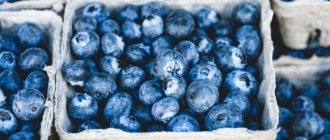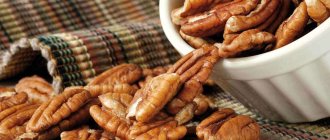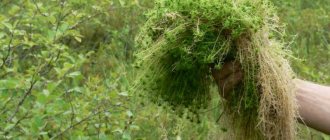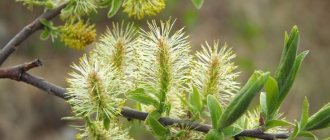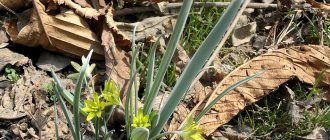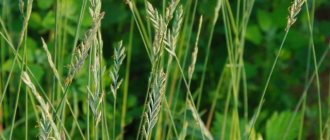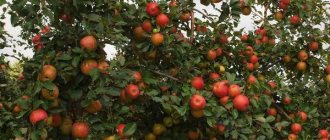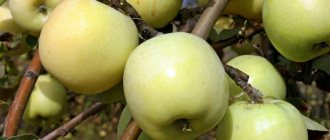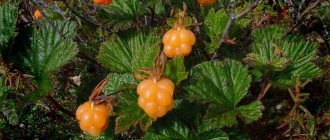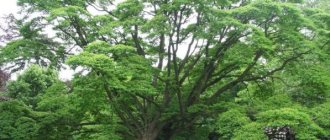Chickweed (Latin: Stellaria media) is a tall plant with a thin stem, narrow petals and white flowers that resemble stars. Herbalists also call it: woodlice; chickweed; biting midge; heart grass, canary grass, hernia grass.
Gardeners and gardeners are trying to eradicate chickweed. It will be difficult to get rid of by hand (hand weeding) - the weed throws out up to 15,000 seeds. They can germinate on site, overwintering in the soil up to five times.
Botanical description and what the plant looks like
The plant reaches a height of up to 50 cm. The stem is ascending, climbing, creeping; tetrahedral; shoots are often hairy, less often bare. The ovoid-shaped leaves are arranged oppositely; at the base they are petiolate, and closer to the top they are sessile, ciliated at the tips. The rhizome is a thin branched structure.
Multi-flowered inflorescences are spread out, the flowers are white, resemble an asterisk, and have a deep division. Each flower has a single-locular ovary. The fruit of the flowers looks like a round (sometimes ovoid) oblong capsule with six dehiscent valves. The box contains a large number of rounded, wrinkled seeds of red-brown shades. Flowering period: late spring and summer. The period of ripening and seed release is from the first summer month to mid-autumn.
Pests and diseases
Chickweed is not affected by pests or fungal infections. There are known cases where the panachure virus developed on stellaria, primarily affecting grapes growing nearby. As the disease progresses, yellow mosaic spots appear on the leaves, and the leaf blade takes the shape of an oak leaf.
It is useless to fight the disease: the affected specimens must be immediately removed and burned, and the areas where they grew should be spilled with a strong solution of potassium permanganate and not used for growing plants for several years.
Classification
Botanical hierarchy:
- genus – Starwort;
- family - Cloveaceae;
- order – Cloves;
- class – Dicotyledonous;
- department – Flowers.
Over 100 subspecies of Chickweed have been found and studied. About fifty species have been recorded in our country alone. More than a dozen varieties have been registered in the central European part.
The most famous types:
- medium (Stellaria media);
- cereal (Stellaria graminea);
- lanceolate (Stellaria holostea);
- longleaf (Stellaria longifolia);
- swamp (Stellaria palustris);
- chickweed (Stellaria crassifolia);
- forest (Stellaria nemorum).
How to distinguish it from other similar herbs by appearance?
The herb lanceolate chickweed, which is also called forest chickweed or stiff-leaved chickweed, is very similar to woodlice. Its difference from woodlice is that lanceolate chickweed is a perennial plant with a thin creeping rhizome. Woodlice grows once per season, leaving behind many tenacious seeds.
These representatives of the genus Chickweed have flowers that are very similar in description, but there is a characteristic difference in the leaves. Chickweed lanceolate has leaves pointed at the ends, while woodlice have rounded leaves.
By the end of the flowering season, lanceolate chickweed reaches a length of about 35 cm (plants up to 60 cm are also found), which is significantly larger than the size of woodlice.
In addition, in forest areas you can find plants that are similar in appearance to woodlice , but not one of them has the property unique to this grass - leaving wet marks on the palms and shoes. Therefore, in dry weather it is quite difficult to confuse woodlice with another grass.
Types and varieties
Chickweed average
Chickweed is an annual plant. The height of the lying or rising stem does not exceed 30 cm. The stem is thin, branched, evenly distributed, but sparsely leafy. The leaves are ovoid in shape with a pointed tip.
Flowers terminal or axillary. The color of the petals is white. Flower petals are bipartite, with long pedicels. Blooming lasts from May to mid-autumn. Ripe fruits - capsules filled with kidney-shaped or rounded seeds - can be found from mid-summer to the end of September.
A distinctive feature of the average chickweed is the strong attachment of the buds, which do not separate even in winter.
Another feature that sets the woodlice apart from other subspecies is a row of hairs that stretches along the stem from one side to the other.
Chickweed
Chickweed is a perennial, herbaceous plant. Another name is grass-like; It is popularly called “Horse Veh” or drunken grass due to the large amount of neurotoxins it contains.
The bare stem with branches spreads along the ground, growing up to 45 cm in height. The shoots are bluish in color, the sepals are white.
Places of growth - meadows, wastelands, steppes with forbs, banks of reservoirs, roadsides, field edges.
Fruiting occurs from the beginning of summer and lasts until mid-autumn.
Chickweed
Healers called chickweed "owl potion" . The plant is perennial; the ascending stem can reach 60 cm in height, covered with glandular hairs. The sessile leaves have a thin ovoid shape. The flowers have a long pedicel and grow on apical and axillary forks. The petals are shaped like stars and are white in color. The fruit of chickweed is a capsule with seeds.
The plant begins to bloom in the last month of spring and fades in mid-July. It can be found in forests with moist soils.
A distinctive feature of oak chickweed is its ability to mutate (the plant has several subspecies).
Chickweed
Chickweed is a perennial plant that does not grow higher than half a meter. The root is creeping, with a branched structure. The base of the shoots is thin, brittle, and has a tetrahedral design. Sessile leaves are arranged oppositely; The leaf blades are lanceolate, with pointed tips. The flowers are white, the diameter of which is no more than 30 mm. Flowering begins in April and ends with the onset of summer. Fruiting lasts throughout the summer months.
Stickweed chickweed can be found in coniferous, deciduous and mixed forests with fertile soil. Favorite places are well-lit forest edges; goes well with other shrubs.
Chickweed is used as a honey plant and forage plant. However, there are known cases of horses being poisoned by this herb.
Chickweed
Witch doctors and healers call it “Yaskirka” or “Chaveda”. This is a perennial grass that does not rise above half a meter; the stem is often recumbent, sometimes rising, has a smooth surface, however, its apex is branched; leaf blades resemble a heart, pointed, sessile; white flowers. The flowering period is the last month of spring and all summer. The seeds are ejected from an elongated ball-shaped capsule.
Chickweed Bunge
Bunge's chickweed is a perennial herbaceous plant found in dark coniferous moss taiga forests. A characteristic difference is the creeping rhizome. Its height reaches 50 cm. The stem is cylindrical, simple or has numerous branches. Glandular hairs extend over the entire surface of the stem. The basal leaves fall off at the time of flowering; stem - ovoid, pointed, ending in cilia; the upper ones are sessile. White oblong petals, split in half lengthwise, not reaching the base of the flower. Flowering occurs in May and all months of summer. The fruit is an ovoid capsule with numerous seeds.
People have noticed that woodlice flowers can predict the weather, in particular the onset of rain. This is because chickweed grass is susceptible to changes in humidity and temperature. It will rain during the day if the corolla of the flower is not raised and open at 9 o'clock in the morning.
Harvesting and preparing chickweed
Chickweed begins to emerge and grow as soon as the snow melts, so it can be collected in early spring. The youngest parts of the plant are the most delicious. By mowing the woodlice while mowing the lawn, you stimulate its growth and rejuvenate it. Thanks to this, new shoots grow, which are best suited for eating. With age, woodlice can become viscous and tough.
To prepare chickweed, remove all yellowed leaves, rough twigs, flowered tops (though the flowers can be left on, they are edible) and bases with root bits, leaving only the greenest parts with the young leaf blades. For large mature plants, only the leaves can be torn off for use and the stems discarded. Rinse the greens thoroughly in a colander and dry gently with a paper towel. Roll the shoots into a ball and chop with a sharp knife to the consistency of confetti.
The youngest parts of the chickweed plant are the most delicious.
Chickweed does not keep well in the refrigerator, which probably explains the fact that it was never used as a commercial green, although it was a popular edible garden plant in the West in the 1800s. Chickweed is best consumed fresh, so plan to use it within a day of cutting.
Pharmacological properties
Woodlice is not an official medicinal plant and is therefore not used by pharmacologists to prepare traditional forms of medicine. However, the biologically active substances present give it the following properties:
- anti-inflammatory;
- immunostimulating;
- wound healing;
- regenerating.
Woodlice contains flavonoids and vitamin C, which ensure the delivery of oxygen to the myocardium, increasing blood flow.
Chickweed contains vitamin K, which is known in medicine as an integral component of drugs that stop bleeding and accelerate the ability of blood to clot.
It is important to remember that most species of woodlice are poisonous.
Chickweed: eat and heal with a beneficial weed
Chickweed, or chickweed, is a typical weed that lives in many garden plots. It especially annoys lawn lovers, who often spend a lot of time and money to get rid of it. But this is an edible, nutritious and tasty plant that has long been used for culinary and medicinal purposes. If you are familiar with chickweed, be sure to read our article. Perhaps you will look at woodlice from a new perspective and change your attitude towards it.
Woodlice: photo of the herb, description, types of chickweed, medicinal properties (read more)
Chickweed: photo, description, useful properties, collection and use in medicine.
Application
In medicine
Industrial pharmacology does not use wood lice for the manufacture of medicines, since the plant composition has not been fully studied.
Mokrichnik is classified by botanists as a class of poisonous plants.
Herbalists, osteopaths and traditional healers still use the beneficial medicinal properties of woodlice to get rid of diseases and improve the health of the body. Tinctures, infusions, decoctions, composite oils are prepared, plant components are dried, and juice is prepared. Prepared drugs are taken orally. They are used in the form of compresses, rubs, poultices (oils, juice, decoctions, tinctures).
In cooking
Freshly picked leaves and stems of woodlice are used by gourmets to prepare salads. Dried leaves and finely broken stems of the plant serve as seasoning for various dishes.
It is important to remember that in case of poisoning, you should immediately consult a doctor and tell them about eating the chickweed plant.
In other areas
Farmers add fresh chickweed and in the form of hay to the feed of cattle, pigs, horses, poultry, and rabbits. However, there are known cases of poisoning of animals, in particular horses. When dried, the herb does not lose its toxic properties.
Beekeeping farms (in particular, Siberian ones, with sparse vegetation) are located near fields with chickweed, since it is an excellent honey plant and has a long flowering period.
This is important to know: a person who has been poisoned by wood lice has an elevated body temperature - up to 40 ° C, muscle cramps, which are felt in the limbs and abdomen.
When examining the mucous surfaces, hyperemia is detected - a strong blood flow, the pulse increases sharply or becomes very weak. Breathing quickens. You need to call a doctor immediately.
What does chickweed taste like and how is it useful?
Chickweed can be eaten both raw and heat-treated. The fresh, raw herb tastes similar to corn silk, meaning it has a pleasantly sweet and slightly earthy flavor. When cooked, chickweed becomes very similar to spinach, but has a different texture.
In cooking, chickweed is excellent raw, its sprouts can be added to sandwiches, and it is also an excellent base for a vitamin salad. Woodlice is usually steamed, stewed or fried. It can be added to soups or stews, but only during the last five minutes of cooking to prevent the tender shoots from overcooking. It also makes excellent pie fillings. In addition, chickweed is an ideal green accent for garnishing dishes. The stems can be placed on hot or cold dishes because chickweed does not wilt like regular microgreens.
Chickweed is a nutritional “super plant” that not only tastes good but also has many health benefits. Woodlice is rich in ascorbic acid, beta-carotene, B vitamins, calcium, magnesium, niacin, potassium, riboflavin, selenium, thiamine, zinc, copper and gamma-linolenic acid. According to some reports, chickweed contains more iron and zinc than any traditional garden green.
The edible part of the woodlice.
According to botanists, no species of chickweed is poisonous, but some people should be careful when eating chickweed.
People prone to allergies should use chickweed with caution, starting with small amounts. If you have a confirmed allergy to chamomile, it is best to avoid consuming chickweed entirely, as it contains similar compounds.
Chickweed, which grows on calcareous soils, can also cause allergies in the form of redness and itching of the skin.
Be careful never to harvest chickweed from areas where there may be soil contamination or where herbicides have been used!
Chickweed flowers and leaves are indeed edible and contain many beneficial substances, but they also contain small amounts of saponins, which can cause stomach upset in people prone to this problem. Overall, saponins benefit our health. However, if you repeatedly eat large amounts of chickweed, you run the risk of taking in potentially dangerous amounts of saponins. Therefore, you should not overuse dishes with chickweed!
Due to the content of saponins, chickweed is also not recommended for pregnant women. Breastfeeding mothers should also avoid foods containing chickweed, as compounds found in the plant may cause a decrease in breast milk production.
Indications for use
Plants are not officially recognized as medicinal, but homeopaths and healers use them to alleviate and cure many diseases. In what cases do homeopaths recommend the use of midge:
- treatment of hemorrhoids;
- stopping bleeding;
- treatment of hemoptysis;
- stopping vomiting blood;
- restoration of the body after a hypovitaminosis state.
A wet decoction will relieve ailments:
- internal organs (hematopoietic organs, genitourinary system);
- respiratory system (cough);
- digestive organs (pain in the gastrointestinal tract);
- skin lesions (rashes, long and difficult to heal wounds and ulcers, abscesses).
Relaxing baths are prepared to tone swollen legs. Woodlice is used by healers in the treatment of tumor tumors.
Baths with a decoction rejuvenate and tone the skin.
Mokrichnik treats and actively prevents hyperthyroidism, atherosclerosis, osteochondrosis, cirrhosis, scurvy, cystitis, anemia, and eye diseases.
Dosage forms of wood lice from traditional healers:
- decoction
- infusion
- tinctures
- juice
- fresh grass
Recipes
There are many effective recipes based on chickweed:
- 1. For blows and bruises, simply apply crushed greenery to the affected area, tie it with a scarf and leave for 3 to 3 hours. This remedy is very effective in relieving fatigue after hard work. And it is useful for those who suffer from arthrosis, arthritis, and sprains.
- 2. To improve vision and eliminate corneal clouding, you need to take 1 tablespoon of finely chopped chickweed, place it in a clean glass container and pour 1 cup of boiling water. Cover and leave for an hour. Then instill the resulting infusion into your eyes 4 times a day, 1-2 drops at a time. This medicine can even help restore lost vision.
- 3. Improving lactation, as well as eliminating swelling of the mammary glands: a tablespoon of chickweed in a glass of boiling water, leave for an hour. Apply to the affected breast as a compress, and also take half a glass of the decoction three times a day, half an hour before meals.
- 4. You can cure gastritis, as well as cleanse yourself after poisoning, using the following recipe: take 300 ml of vodka, one tablespoon of chopped chickweed. Leave in a dark place for two weeks. Take the resulting product 20 drops per glass of water, 1 time per day, 30 minutes before meals.
- 5. The use of this remedy perfectly calms the nervous system: take 2 tablespoons of chopped woodlice, pour 200 ml of boiling water and simmer over low heat for 10 minutes. Let it brew for half an hour, then strain. Take 2-3 times a day before meals, 50 ml.
- 6. For diseases of the liver and thyroid gland, the condition will be improved by fresh woodlice juice, sweetened with honey. You need to take this juice before meals, four to five times a day.
- 7. If you have general weakness and poor appetite, you need to take fresh woodlice greens, wash them in clean water, shake off the moisture, and pass through a blender or meat grinder. Separate the juice from the resulting mass through a strainer and take 1 teaspoon, after sweetening it with honey (3 or 4 times a day).
- 8. A restorative infusion will improve the general condition of the body: you need to take one tablespoon of woodlice, brew a glass of boiling water, leave for an hour. Drink 100 ml instead of tea 2-3 times a day.
- 9. Pain in the spine and inflamed joints will go away: you need to take dry chickweed grass, place it in a linen bag and apply it to the disturbing area for the whole day. You can also use fresh woodlice, but first knead it with your hands.
- 10. To alleviate the condition of radiculitis, you need to take fresh woodlice, fill a three-liter glass container with it and pour half a liter of vodka into it. Top up with boiled clean water. Close the lid and leave in a dark place for three weeks. Then strain and take 50 ml before meals three times a day.
- 11. For boils, small ulcers, and allergic rashes, a remedy will help, for the preparation of which you need to take 400 ml of dry or fresh woodlice grass, pour three liters of boiling water over it, and cover with a lid. Infuse and add 300 - 500 ml to the bath before starting ablution.
- 12. The following recipe will help you get rid of purulent wounds and skin diseases: take ten tablespoons of crushed chickweed grass, pour 200 ml of boiling water and boil for 10 minutes. Leave for four hours, then strain and use for lotions, as well as baths that soothe the condition of the skin.
- 13.Getting rid of cracks, corns and calluses on your feet with the help of woodlice is very, very simple. You just need to pick chickweed, put it in your shoes or socks, and walk around all day (you can do this at night). For maximum results, it is useful to repeat this procedure three to four times a week.
- 14. Cosmetic rejuvenating mask: take 1 teaspoon of honey and kefir, a tablespoon of wood lice, finely chopped. Mix and apply to face. Leave for twenty minutes, then rinse with warm water.
- 15. The following remedy will help cure cystitis: take 1 tablespoon of woodlice, pour a glass of boiling water, then let it brew and strain after an hour. Drink half a glass 3-4 times a day, before meals.
- 16. Mastopathy, as well as other tumors, go away thanks to the use of this remedy: pour boiling water over chickweed and gradually cool, make a lotion from this herb on the disturbing area. In addition to the lotion itself, also use a healing decoction, 0.5 cups at a time, half an hour before meals, 4 times a day. The product is very effective. The decoction is prepared in a thermos, the proportion is a tablespoon of herb per glass of water. Do not close the thermos for half an hour, otherwise the wood lice will “suffocate,” that is, it will lose its important medicinal properties.
- 17. The cyst, as well as erosion, can be cured by introducing a tampon soaked in a decoction of chickweed at night. You must first do this procedure for 5 days in a row, then take a break for the same amount of time. The procedure must be continued until complete recovery occurs.
- 18. Chickweed herb miraculously helps relieve fatigue if you put it in your shoes or in a sock instead of an insole.
Contraindications for use
The primary contraindications are allergic reactions to plant components and individual intolerance. Pregnant women and children are prohibited from consuming wood lice.
Use in early adolescence with an unformed reproductive system is also prohibited - due to the ability of the herb components to cause premature puberty.
Use with caution in hypotensive patients, people with heart failure, and acute diseases of the gastrointestinal tract.
Woodlice: what does it cure?
In the Far East, these greens are traditionally chopped into salads, collected before flowering, until the leaves become coarse and lose their taste.
It is also used as a filling for pies and added to soups. This food supplement allows you to quickly replenish the supply of vitamins in the body that has become depleted over the winter.
Chickweed is used as a medicinal drug or to relieve pain:
- for anxiety conditions,
- with salt deposits in joints,
- for enterocolitis, constipation, appendicitis,
- as a choleretic, diuretic, lactic,
- for hepatitis and various liver diseases,
- as an anti-inflammatory: bronchitis, pneumonia, pleurisy, cough, colds, as well as for poorly healing purulent wounds, ulcers, etc.
Procurement of raw materials
The preparation of medicinal material occurs when the star flowers bloom. For collection, only the upper, above-ground part of the woodlice is used - stems, leaves and flowers.
It is not recommended to collect along roads and near industrial enterprises. During growth, the plant can accumulate toxins and poisons.
The torn grass must be cleaned of impurities and debris and spread in a layer of 3-5 cm on a dry, clean paper or fabric base. The drying process should take place in a shaded, ventilated place that is out of reach of direct sunlight. When it rains, the grass must be collected to prevent it from getting wet and absorbing excess moisture. You can dry chickweed in an electric dryer, setting the temperature to 40-50°C. The finished dried product must be crushed. Store in a canvas bag, glass jar or paper bag. Shelf life – 1 year.
Prolonged drying may reduce the healing level. In this case, it will be difficult to track the dosage. If it is not possible to prepare wood lice yourself, you can purchase it from healers and herbalists. You should definitely ask where the grass was collected so that there are no busy highways or enterprises with hazardous waste nearby.
Composition of chickweed
The composition of the herb is rich in a variety of beneficial substances:
- Vitamins. Vitamin C is involved in the normalization of metabolic processes, vitamin E is necessary for preventing the development of cancer and strengthening the immune system, vitamin K helps strengthen the walls of capillaries and regulates blood clotting processes.
- Microelements. Carotene strengthens the cardiovascular system and protects the body from the development of malignant tumors. Magnesium makes the muscular system calmer and also helps normalize the activity of nerve cells. Copper can ensure high-quality regeneration and growth of body tissues. It (copper) also delivers iron to various tissues of the body. Iron is involved in tissue respiration processes and is involved in the synthesis of hemoglobin.
- Tannins. They have an anti-inflammatory effect and are also able to disinfect the body, bind and remove heavy metal salts. Also, this group of substances guarantees a quick stop of blood in case of injury and counteracts the poison that bees produce at the time of a sting.
- Alkaloids. Their biological effect is very strong. As part of chickweed, these substances can influence the process of excitation of the nervous system, can anesthetize and have a mild expectorant and diuretic effect.
- Essential oils. Their content in chickweed is quite high. They are designed to have an antimicrobial effect, tone the body, rejuvenate it, promote the removal of excess fluid and retain heat.
Starwort also contains flavonoids, which are involved in regulating the permeability of vascular walls and help reduce their fragility. The beneficial properties of chickweed will help support the body and help strengthen the immune system.
Prevention of woodlice
The main preventative work to combat the weed begins in the spring. Woodlice stands out well with its bright green appearance among other plants that have not yet recovered from winter.
Necessary:
- It is good to loosen the area with a rake. This will help disrupt the weed's root system and prevent it from rising. It is important to do this immediately after the onset of heat.
- Be sure to remove the entire plant, and not just remove the above-ground part.
- Use proper and sharp garden tools – hoe, flat cutter, extractor.
- Destroy all parts of the weed without exception. The high reproductive capacity of woodlice will allow the weed to be reborn even from small pieces of shoots or roots.
- In the fall, dig up the areas where the weed was located. This needs to be done using a pitchfork and several times. Be sure to destroy all woodlice remnants.
These methods are not difficult, especially in small areas. If you use them regularly, the amount of weed will be significantly reduced. You can also regularly prepare medicinal decoctions and teas from woodlice so that the weed population does not increase.
Why is woodlice harmful?
The list of beneficial properties is not an indication for growing woodlice weed in plots. In addition to its benefits, chickweed causes a lot of harm to cultivated species. According to its properties, the plant is classified as a weed.
Woodlice causes considerable harm:
- Covering the ground with a thick blanket prevents the passage of light and air.
- In areas occupied by woodlice, pathogenic microorganisms develop, which contribute to the spread of diseases.
- In the density of the weed cover, garden and vegetable pests multiply.
- The branched root system of woodlice prevents the roots of cultivated plants from absorbing nutrients from the soil.
In addition, garden species lack moisture and sun.
Characteristic
The lifespan of an ephemeral plant is very short - only a month, but the seeds it produces quickly germinate, forming entire colonies of thickets. Selectors and scientists have proven that seeds can take up to 30 years to germinate. Even a plant pulled out by its roots still continues to grow actively, and it is quite difficult to eradicate it.
Chickweed belongs to the carnation family. Found in temperate climate zones. Chickweed grass has a branched stem covered with multiple sticky hairs that retain water and a thin rhizome. The maximum height is up to 25 cm. It begins to ripen from late spring to September, releasing up to 30 thousand kidney-shaped seeds.
By the way, poultry and livestock like to feast on it: chickens, turkeys, goats. It has been noticed that if the plant is added to the feed of cows, they begin to produce more milk. Fresh chickweed can be used in cooking; it makes excellent fortified salads, but it is especially popular in folk medicine.
Possible harm
There are toxic species of chickweed . The following plants are dangerous to health:
- forest chickweed;
- chickweed lanceolate;
- chickweed;
- swamp chickweed.
Poisonous chickweed causes poisoning . When it occurs, victims experience the following symptoms:
- redness and swelling of the mucous membranes - hyperemia;
- abdominal cramps;
- limb spasms;
- rapid pulse;
- weak pulse;
- rapid breathing;
- body temperature rises to 40 degrees.
Poisoning lasts up to 3 days.
Use of herbs for cosmetic purposes
Hygrometric chickweed is also in demand in cosmetics.
For a rejuvenating mask, you need to mix chopped grass (1 tbsp), honey (1 tsp), cream (1 tsp). The composition is applied to the face for 15 minutes and rinsed.
For dull skin, you can use compresses. A small towel is soaked in a decoction of the plant and placed on the skin. Leave the compress for 20 minutes, after which you rinse your face.
Products containing herbs are used to treat the skin on the legs and arms; lotions, cosmetic mousses for washing, etc. are made from decoctions.
Woodlice grass in cooking
Vegetable soup is prepared from the following ingredients:
- chickweed (100 g);
- potatoes (4 pcs.);
- water (1 l);
- carrots 1 pc.);
- onions (1 pc.);
- vegetable oil;
- parsley dill;
- salt.
Vegetables are chopped, filled with water and boiled. Fry chopped onions and carrots in oil for 6 minutes. Add sauté and chopped herbs to the pan. When cooking is complete, add herbs and salt. The dish is served with sour cream.
The herb can be added to sandwiches. For 1 piece of toast you need butter (25-30 g), chickweed, garlic (2-3 cloves), parsley. The bread is spread with butter, the herbs and garlic are chopped, laid out on toast, and decorated with parsley leaves.
woodlice is used in cooking to replenish dishes with vitamins and minerals
The following salad options are in demand:
- 1. You will need chickweed grass (100 g), beet tops (100 g), dill (1 bunch), red onion (1 pc.), green onions, parsley, boiled eggs (2-3 pcs.), medium-fat sour cream . The ingredients are chopped, mixed, salted, and seasoned with sour cream.
- 2. For the next version of the salad, you need carrots (1 piece), garlic (1-2 cloves), chickweed (1 bunch), sour cream or olive oil. Carrots and grass are chopped, garlic is pounded in a mortar. The ingredients are mixed and seasoned.
For a refreshing cocktail you need the following products:
- tangerines (2 pcs.);
- medium-sized apples (2 pcs.);
- chickweed (100 g).
Fruits and greens are washed, cut, placed in a blender with added water. At high speed, the products are ground and poured into cups.
The vitamin cocktail is prepared from the following components:
- woodlice (250 g);
- natural honey (1-2 tbsp.);
- horseradish (50 g);
- water (2 l).
The grass is chopped, the components are mixed, filled with water and left for 4 hours. The drink is filtered, honey is added to the composition.
